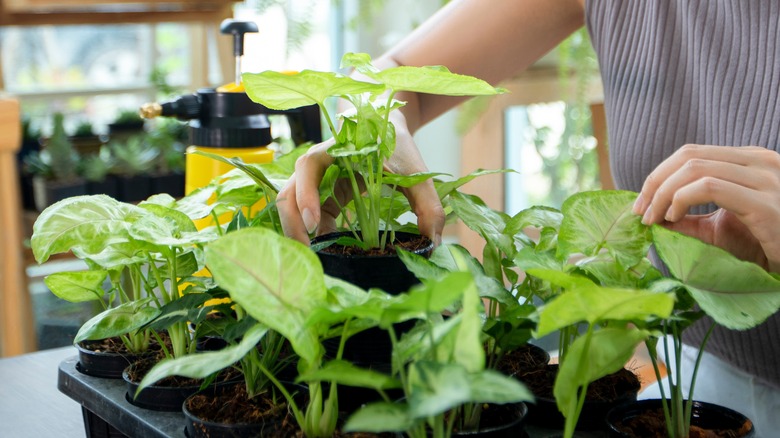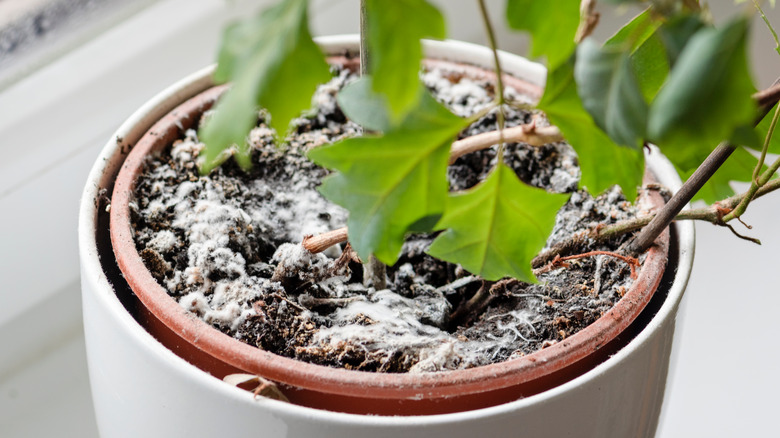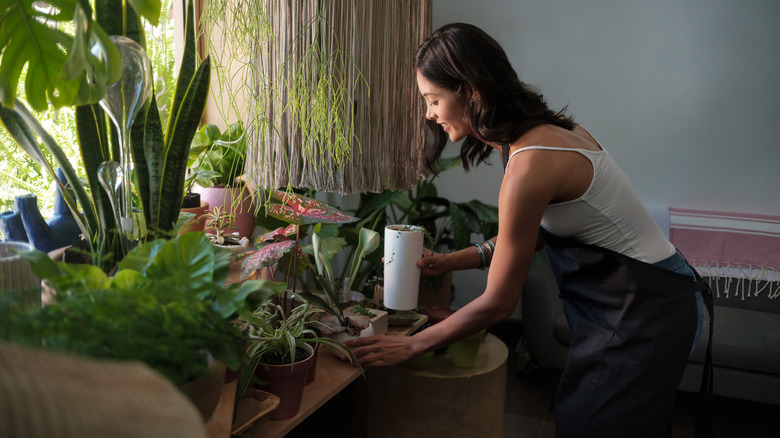Why You Should Be Bottom Watering Your Houseplants
"As above, so below" is an ancient quote that continues to speak true for many... and perhaps to your surprise, it can also apply to the watering of your plants. From seasoned green thumbs to newbie plant parents, a common challenge across all houseplant owners is how to optimally water your leafy companions.
However, this concern may be no more, as an alternative method has recently grown its way into the houseplant community: bottom watering. Instead of the conventional way of pouring water on top of the soil, you are actually going to be watering the soil from the bottom. Are you still following? Good, because that's all it is — really simple and surprisingly more effective.
The reasons are manifold — bottom watering ensures balanced hydration throughout your soil without leaving it dry and improperly nourished like when watering from the top. Doing it this way allows the plant to develop even stronger as deeper roots tend to grow toward the water promoting capillary action.
Bottom watering can solve your plant problems
Over-watering and under-watering pose the biggest challenge when taking care of a plant, and thankfully, this technique fixes that and many other problems that can stem from it. By keeping a dry top layer of soil, you can deter insects, pests, and fungi away from your plant. Bottom watering eliminates this issue by minimizing water contact with the foliage and upper soil layers where pathogens often dwell.
Take leaf or crown rot, for example, which is basically a fungal or bacterial infection on your plant. Other fungal issues you may want to stay clear of are houseplant invaders by the name of fungus gnats. These are fruit fly-sized insects that are attracted to the damp topsoil, which serves as a great home for their 200 eggs... Yeah, no, thank you.
Lastly, bottom watering can prolong the lifespan of your soil and plant. Frequent top watering can lead to soil erosion, leaching away nutrients vital to your plant. With bottom watering, this issue is significantly reduced, preserving the quality and nutrient composition of your soil.
Bottom watering has it's limits, so stay within them
It's important to note, however, that bottom watering isn't always the perfect solution for every plant or situation. Be mindful of your plants with more shallow roots. Plants like succulents, snake plants, calathea, aloe, epiphytes, African violets, etc., may be best to top water. If you would like to bottom water these plants, make sure they are in shallow enough containers for the water to reach up those roots. As always, consider the needs of your specific plants and the practicality of your care routine.
To bottom water your plants, all you need is a container with sides high enough to hold water, ideally reaching the pot's base or slightly higher. Place your plant in the container, then fill it with water. Allow your plant to soak up the water it needs (typically around 15 minutes, depending on the size), and then remove and drain it to avoid waterlogging.
While it might seem like a small change, switching to bottom watering could revolutionize your plant care routine, leading to healthier, happier houseplants. With the benefits of deeper hydration, disease prevention, pest control, and soil preservation, it's clear why the houseplant community is increasingly endorsing bottom watering. So, why not consider trying it with your plants and witnessing the benefits first-hand?


